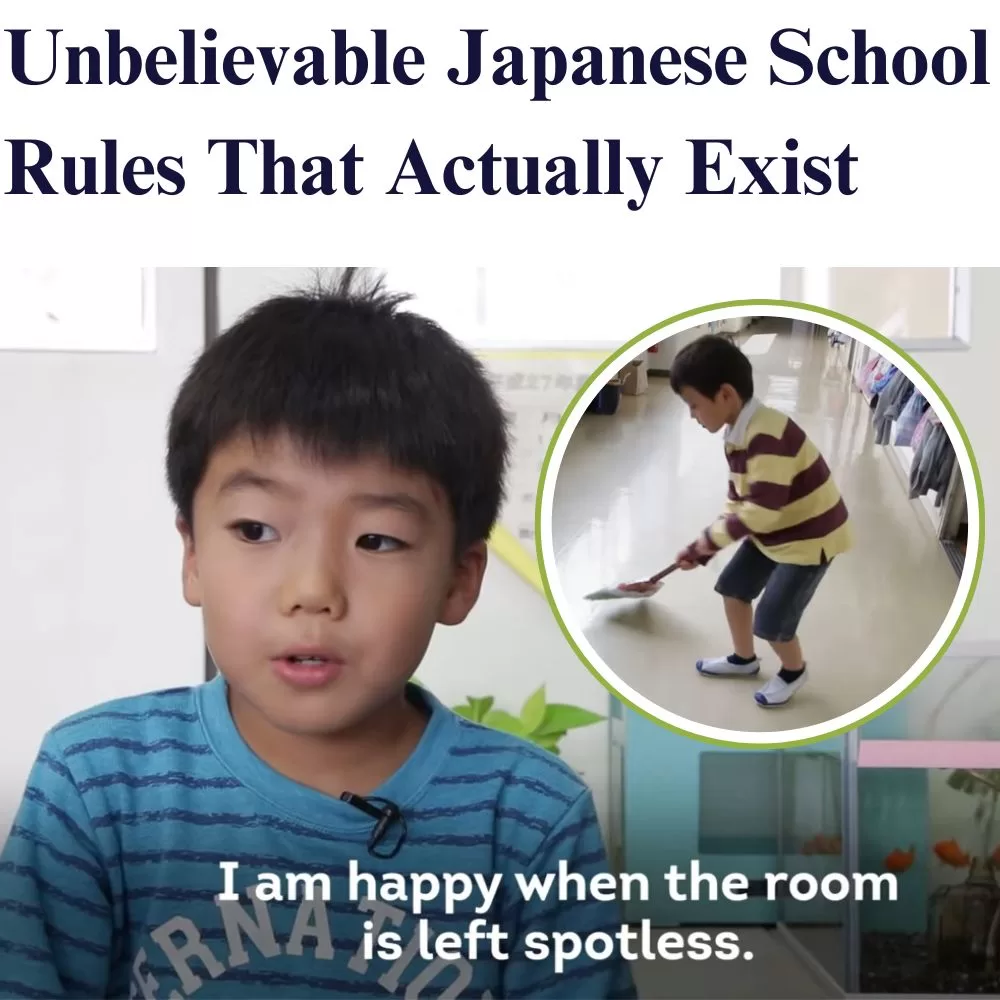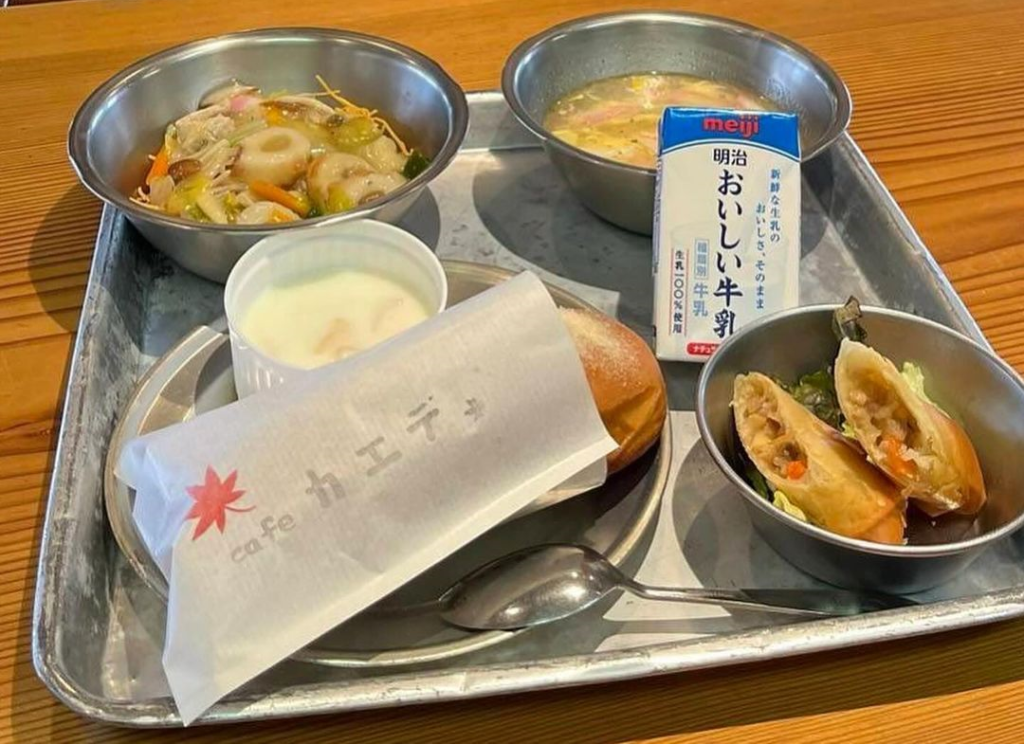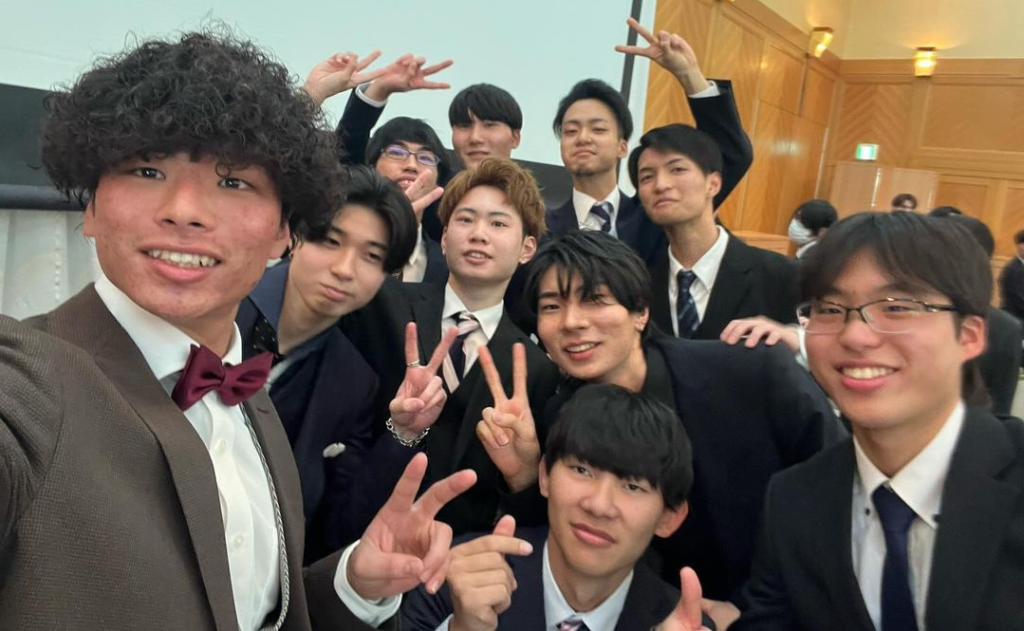9 Unbelievable Japanese School Rules That Actually Exist
Japanese school rules focus on discipline, respect, and community. Key rules include mandatory uniforms, no makeup or hair dye, cleaning duties, club activities, and strict guidelines on cell phone use.
Let’s dive deeper into 10 Japanese school rules that you may find different. Keep reading to learn how these unbelievable Japanese school rules play a significant role in shaping students’ lives and education.
Rule 1: Cleaning duty for all students

Explanation of the rule
In Japanese schools, all students participate in cleaning duties. This means that everyone, including teachers, must help keep the school clean by performing various chores.
Reasons for the rule
The purpose of this rule is to teach students the importance of responsibility, teamwork, and respect for their environment. By using such rules and participating in cleaning duties, students learn to take care of their surroundings and understand the value of working together.
Examples of chores students perform
Some chores that students might perform include sweeping the floors, wiping down desks, cleaning windows, and emptying trash cans. They may also clean bathrooms, hallways, and outdoor areas, ensuring that the entire school remains tidy and well-maintained. This practice helps create a clean and organized learning environment for everyone.
Rule 2: School lunch is mandatory

Explanation of the rule
In many Japanese elementary schools, students are required to eat the school-provided lunch. This means that everyone eats the same meal, which is usually prepared by the school’s kitchen staff.
Reasons for the rule
The main reason for this rule is to ensure that all students receive a balanced, nutritious meal. By providing a healthy lunch, schools can help students maintain their energy and focus throughout the day. This rule also promotes a sense of community, as students share the same meal and eat together.
School lunch menu and nutritional benefits
Japanese school lunches often include a variety of dishes, such as rice, fish or meat, vegetables, and soup. These meals are carefully planned to provide the right balance of nutrients, such as protein, carbohydrates, vitamins, and minerals. By eating these well-balanced meals, students can stay healthy and energized for learning and other activities.
Rule 3: Uniforms must be worn at all times

Explanation of the rule
In Japanese schools, students are required to wear uniforms. This means many schools say that they must wear the same type of outfit every day to school.
Reasons for the rule
The main reason for this rule is to promote equality and unity among the students. By wearing the same school uniform, everyone looks similar, and there are no visible signs of social status or wealth. This helps create a sense of community and promotes a focus on education rather than fashion or appearance.
Different types of uniforms
There are different types of uniforms depending on the school and the grade level. For example, elementary school students usually wear a sailor-style uniform, while middle and high school students wear skirts and a blazer with a tie.
There may also be different uniforms for different seasons, such as warmer outfits for winter and cooler outfits for summer. Some schools also have different uniforms for sports activities or special events.
Rule 4: No hair dye or makeup

Explanation of the rule
In Japanese schools, students are not allowed to use hair dye or wear makeup. This means that students must keep their natural hair color and avoid using products like mascara or lipstick.
Reasons for the rule
The main reason for this rule is to promote simplicity and a focus on education. With strict rules not allowing hair dye or makeup, students can concentrate on their studies without distractions. It also helps create a sense of equality among the students, as everyone looks more similar without makeup or dyed hair.
Consequences for breaking the rule
If students break this rule, they may face different consequences. Some schools may give a warning, while others might ask the student to remove the makeup or dye their hair back to its natural color. In more severe cases, students could be suspended or even expelled from high school.
Rule 5: No jewelry or accessories

Explanation of the rule
Japanese schools have a rule that students cannot wear jewelry or accessories. This includes items like necklaces, bracelets, and even some hair accessories.
Reasons for the rule
The reason behind this rule is to maintain a simple and distraction-free learning environment. By not allowing students to wear jewelry or accessories, schools can prevent students from focusing on appearances instead of their studies. This rule also helps promote a sense of unity among the students, as everyone is dressed in a similar manner.
Rule 6: No cell phones during school hours
Explanation of the rule
In Japanese high schools now, students are not allowed to use their cell phones during school hours. This means that they cannot make calls, send messages, or use social media while on campus.
Reasons for the rule
The main reason for this rule is to prevent distractions and disruptions during class time. By not allowing cell phone use, students can focus on their studies without interruptions or outside distractions. This rule also helps prevent cheating during exams and other assessments.
Rule 7: No romantic relationships

Explanation of the rule
In Japanese schools, students are not allowed to have romantic relationships with each other. This means that they cannot hold hands, hug, or engage in any other physical displays of affection.
Reasons for the rule
The main reason for this rule is to maintain a focus on education and prevent distractions from relationships. Japanese schools value academic achievement, and romantic relationships can be seen by parents as a hindrance to that goal. This rule also helps prevent bullying and gossip related to romantic relationships.
Rule 8: Students must participate in club activities

Explanation of the rule
In Japanese schools, students are encouraged to participate in club activities outside of regular class hours. These clubs can be based on a variety of interests, such as sports, music, art, or academics.
Reasons for the rule
The main reason for this rule is to promote personal development and social skills. By participating in club activities, students can learn new skills, develop their talents, and make new friends. This rule also helps create a sense of community and teamwork among students.
Examples of popular club activities
Some examples of popular club activities in Japanese schools include soccer, baseball, volleyball, judo, tea ceremony, calligraphy, and music clubs. There are also academic clubs, such as math, science, and debate clubs, which help students develop critical thinking and communication skills.
These clubs are an essential part of Japanese school culture, and many students look forward to participating in them.
Rule 9: No leaving school premises during school hours

Explanation of the rule
In Japanese schools, students are not allowed to leave the school premises during school hours unless they have a valid reason and permission from a teacher or staff member.
Reasons for the rule
The main reason for this rule is to ensure student safety and accountability. By not allowing students to leave the school premises without permission, schools can keep track of their whereabouts and prevent accidents or incidents outside of school. This rule also helps maintain discipline and order in the school environment.
Final Thoughts
These rules have a significant impact on student’s education and character development. They promote a sense of discipline, responsibility, teamwork, and respect for the learning environment.
By following these rules, students learn important life skills and develop positive character traits that can benefit them in the future.
Reflection on the differences between Japanese and Western school systems and their respective rules
The Japanese school, education system, and its rules differ significantly from Western school systems. Japanese schools place a strong emphasis on academic achievement, discipline, and respect for authority.
In contrast, Western schools prioritize individuality, creativity, and critical thinking. While there are pros and cons to both approaches, it is clear that Japanese school rules have contributed to Japan’s reputation as a highly disciplined and successful society.
Stories You Will Also Like
Tourist Arrivals to Japan Plunge Amid Rumors of July 2025 Disaster
Japan Unveils Solar Super Panel Project Targeting Power Output Equal to 20 Nuclear Reactors
Honda Tadakatsu Japans Legendary Samurai Who Fought 55 Battles Without Injury